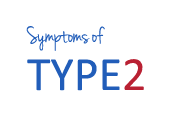|
|
|||||||||
 |
|||||||||
|
|||||||||
|
|||||||||
 |
|||||||||
|
|
|||||||||
|
|||||||||
|
|||||||||
|
FDA REQUIRED STATEMENT Statements on this site have not been evaluated by the Food and Drug Administration. Products are not intended to diagnose, treat, cure, or prevent any disease. |
 |
|||||||||
| Oakway Health Center, Inc. TOLL FREE : 888-460-3091 customerservice@oakwayhealthcenter.com |
|||||||||






